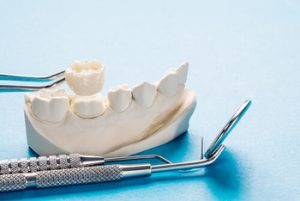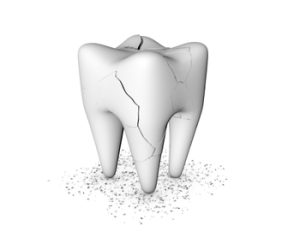When you’re dealing with a damaged or infected tooth, two common treatment paths might come up during your dental visit: a root canal or a tooth extraction. While both aim to address pain and infection, they take very different approaches. One preserves your natural tooth; the other removes it entirely.
In this blog, we’ll explore the ins and outs of root canal vs extraction, helping you understand why root canal treatment is often the preferred choice among dental professionals. We’ll also discuss what each dental procedure involves, what to expect, and the impact on your oral health and overall wellbeing.
Let’s Talk About the Root of the Problem
Before diving into the options, it helps to understand what happens when you have a damaged or infected tooth. Deep tooth decay, trauma, or a cracked tooth can give bacteria a pathway into the dental pulp which is the innermost soft tissue of your tooth that houses nerves and blood vessels. When this infected pulp is left untreated, it can lead to intense dental pain, abscesses, or even further complications like gum disease and cardiovascular disease.
That’s where treatment becomes urgent, and your dentist will likely recommend either a root canal procedure or tooth extraction.
What Is Root Canal Treatment?
Root canal treatment is a careful and effective way to save a tooth that’s been affected by deep decay or infection. During the procedure, your dentist will remove the infected pulp from inside the tooth, thoroughly clean and disinfect the canals, then seal the space with a permanent filling or a crown to restore its strength and function.
Here’s how the root canal procedure works:
Your dentist will start by numbing the area using local anaesthesia to ensure you’re comfortable. Then, they’ll create a small opening in the tooth to remove the infected pulp. After thoroughly cleaning and shaping the root canals, the gap is filled and sealed. In most cases, a dental crown is placed on top to protect and restore the tooth’s strength.
The beauty of a root canal is that it preserves your natural tooth structure, maintaining your natural smile and the alignment of your other teeth.
What Happens During a Tooth Extraction?
 On the other hand, tooth extraction is the complete removal of the affected tooth from its socket. This might be necessary if the tooth is severely damaged, too decayed to be saved, or poses a considerable risk to your overall oral health.
On the other hand, tooth extraction is the complete removal of the affected tooth from its socket. This might be necessary if the tooth is severely damaged, too decayed to be saved, or poses a considerable risk to your overall oral health.
The process is straightforward:
- Your dentist applies local anaesthesia
- The problematic tooth is gently loosened and pulled
- The extraction site is cleaned and sometimes stitched to promote healing
While this provides immediate relief, especially if the tooth infection is severe, it comes with its own set of challenges.
The Hidden Cost of Losing a Tooth
A missing tooth is more than just a gap in your smile. An extracted tooth can lead to a cascade of dental issues over time:
- The jawbone may begin to shrink due to a lack of stimulation
- Nearby surrounding teeth may shift, affecting your bite
- Your natural tooth structure becomes harder to maintain
- You may need restorative procedures like a dental implant, bridge, or denture
Plus, tooth replacement options come at a higher cost and may require more extensive treatment down the track.
Why Root Canal Treatment Is Often the Better Option
Here’s why many dental professionals recommend root canal over extraction scenarios:
1. You Keep Your Natural Tooth
Your original tooth plays an essential role in chewing, speaking, and maintaining facial structure. Saving it helps avoid the chain reaction caused by a missing tooth.
2. Less Impact on Surrounding Teeth
A root canal addresses the damaged or infected tooth without disturbing neighbouring teeth. In contrast, tooth removal can destabilise nearby teeth, increasing the risk of future dental pain or misalignment.
3. Avoid Complex Tooth Replacement Procedures
Once a tooth is removed, you will likely need to consider a dental implant or another replacement. These options are not only costly but also involve a surgical procedure and longer recovery times.
4. Long-Term Success with Early Intervention
Modern root canal therapy has a high success rate. With proper care, a treated tooth can last a lifetime. Choosing early intervention prevents the need for more invasive treatments later on.
5. Minimal Discomfort with Modern Techniques
Thanks to advanced tools and the use of local anaesthesia, the root canal procedure is now quite comfortable. Many patients compare it to getting a standard filling.
When Tooth Extraction Might Be the Only Option
 While root canal is often the preferred treatment, tooth extraction may still be necessary in certain situations:
While root canal is often the preferred treatment, tooth extraction may still be necessary in certain situations:
- The tooth is fractured below the gum line
- There is not enough tooth structure left to support a crown
- Extensive bone loss or advanced gum disease is present
- The tooth has already had multiple failed treatments
- It’s a wisdom tooth or a non-functional molar with a recurring infection
In these cases, your dentist will work with you to create a treatment plan for replacing the extracted tooth and protecting your oral health.
Root Canal vs Extraction: Which Costs More?
At first glance, a tooth extraction may seem more affordable. However, when you factor in the cost of replacing the missing tooth, such as with a dental implant, the expenses can quickly add up.
A root canal, while more involved upfront, can be more cost-effective in the long run because it eliminates the need for tooth replacement and helps preserve your dental health.
Can You Avoid Root Canal Treatment Altogether?
The best way to avoid either treatment is by preventing problems before they start. Good oral hygiene, regular check-ups, and early intervention for dental concerns are your best defence against tooth decay and tooth infection.
But if you already have a compromised tooth, delaying care can lead to more pain, higher costs, and further complications. Listening to your dentist and acting early can make all the difference.
What About Pain?
Many people fear root canals due to outdated horror stories. But today, the procedure is highly efficient and comfortable. With local anaesthesia and your dentist’s training, you’ll experience minimal discomfort.
In fact, the pain from an infected tooth is often far worse than the treatment itself. And while an extraction might bring immediate relief, it can also create lingering soreness as the extraction site heals.
Aftercare: What Happens Next?
Whether you’ve had a root canal or a tooth extraction, proper aftercare is key to a smooth recovery and long-term oral health. Knowing what to expect can help you heal faster, avoid complications, and get back to your normal routine with confidence. Let’s take a look at what happens once your procedure is done.
After a Root Canal
- You may experience mild tenderness for a few days
- Your dentist may recommend a crown for added strength
- Normal brushing and flossing can resume almost immediately
After an Extraction
- You’ll need to avoid certain foods and activities for several days
- The site must be carefully cleaned to avoid infection
- You may need additional treatment for tooth replacement
Clearly, root canal therapy offers a smoother recovery and a more stable long-term outcome.
Which Treatment Is Right for You?
 Every mouth is different, and so is every affected tooth. The right treatment depends on your unique situation. Your dental professional will consider the following:
Every mouth is different, and so is every affected tooth. The right treatment depends on your unique situation. Your dental professional will consider the following:
- The condition of the decayed tooth
- The presence of infection or damage
- The role of the tooth in your bite
- Your overall health concerns and goals
It’s important to have a thorough discussion with your dentist and explore the pros and cons of canal vs extraction options before deciding.
The Role of Root Planing and Preventive Care
If you’re trying to avoid invasive procedures altogether, regular professional cleanings and treatments like root planing can help prevent gum disease and the spread of infection. Preventive care keeps your natural tooth strong and reduces your risk of ending up with a problematic tooth in the first place.
Final Thoughts: Save Your Tooth When You Can
Both root canal and tooth extraction can address a compromised tooth, but choosing to preserve your natural tooth with root canal treatment comes with several advantages. It helps protect your oral health, keeps your natural smile intact, and prevents the chain reaction that often follows the loss of a tooth.
If you’re experiencing dental pain or suspect a tooth infection, don’t wait. Early treatment can save your tooth, spare you from costly restorative procedures, and safeguard your overall health.
Still Unsure About Root Canal vs Extraction?
Book a consultation with Beyond Infinity Dental at (02) 8806 3799 to speak with your dental professional about your symptoms, concerns, and goals. They’ll guide you through the best options based on the condition of your tooth, your long-term needs, and your comfort level with each dental procedure.
Remember, saving your original tooth is usually the best thing you can do for your smile and your overall oral health.
Note: Any surgical or invasive procedure carries risks. Before proceeding, you should seek a second opinion from an appropriately qualified health practitioner.
References
- Healthline. Dental anesthesia: What you need to know. https://www.healthline.com/health/dental-and-oral-health/dental-anesthesia
- Cleveland Clinic. Root canal. https://my.clevelandclinic.org/health/treatments/21759-root-canal
- MedlinePlus. Tooth extraction. https://medlineplus.gov/ency/article/007630.htm
- NHS. Tooth decay. https://www.nhs.uk/conditions/tooth-decay/#:~:text=Tooth%20decay%20happens%20when%20bacteria,gums%20from%20an%20early%20age.









